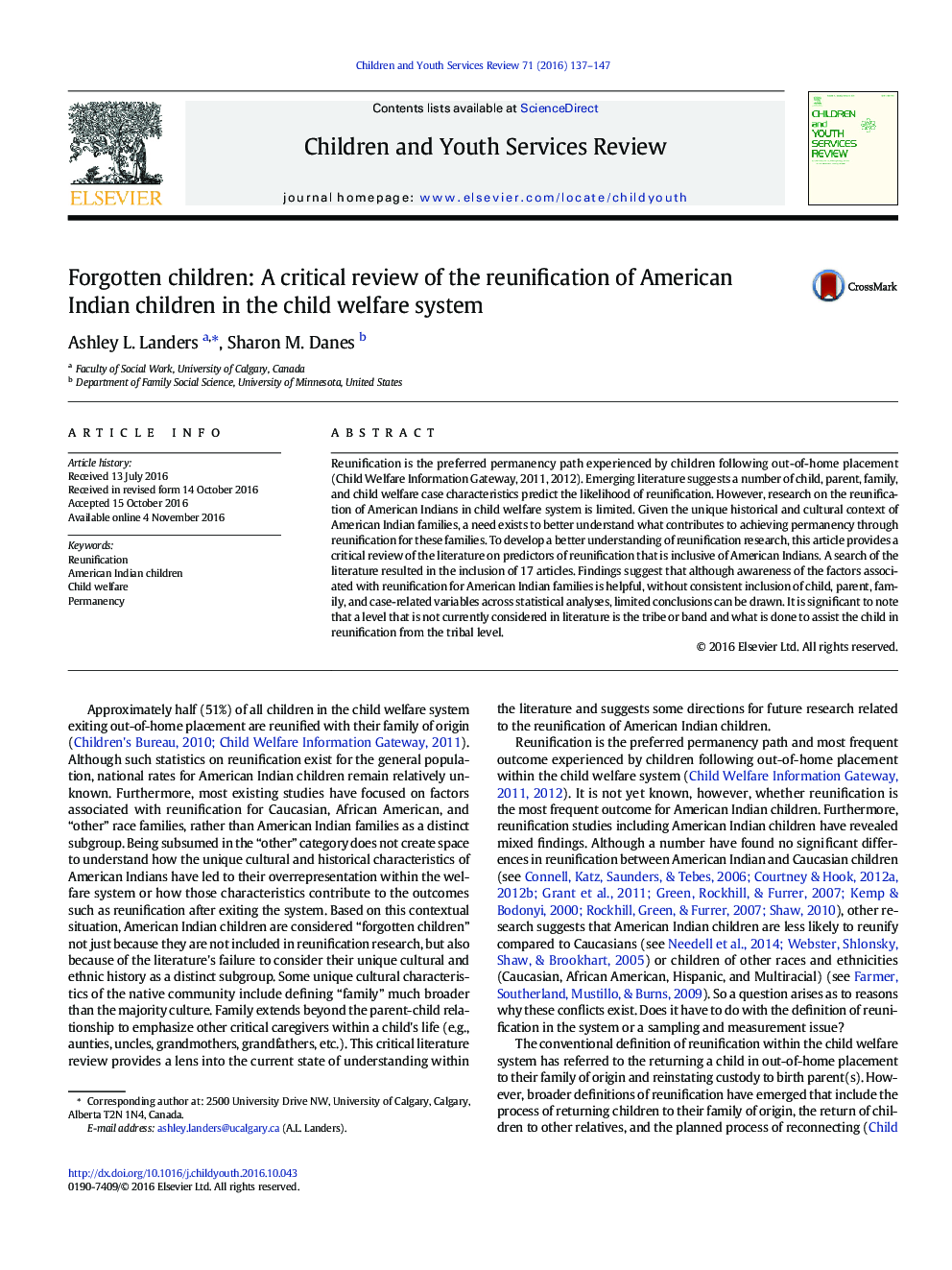| Article ID | Journal | Published Year | Pages | File Type |
|---|---|---|---|---|
| 4936487 | Children and Youth Services Review | 2016 | 11 Pages |
Abstract
Reunification is the preferred permanency path experienced by children following out-of-home placement (Child Welfare Information Gateway, 2011, 2012). Emerging literature suggests a number of child, parent, family, and child welfare case characteristics predict the likelihood of reunification. However, research on the reunification of American Indians in child welfare system is limited. Given the unique historical and cultural context of American Indian families, a need exists to better understand what contributes to achieving permanency through reunification for these families. To develop a better understanding of reunification research, this article provides a critical review of the literature on predictors of reunification that is inclusive of American Indians. A search of the literature resulted in the inclusion of 17 articles. Findings suggest that although awareness of the factors associated with reunification for American Indian families is helpful, without consistent inclusion of child, parent, family, and case-related variables across statistical analyses, limited conclusions can be drawn. It is significant to note that a level that is not currently considered in literature is the tribe or band and what is done to assist the child in reunification from the tribal level.
Related Topics
Health Sciences
Medicine and Dentistry
Perinatology, Pediatrics and Child Health
Authors
Ashley L. Landers, Sharon M. Danes,
